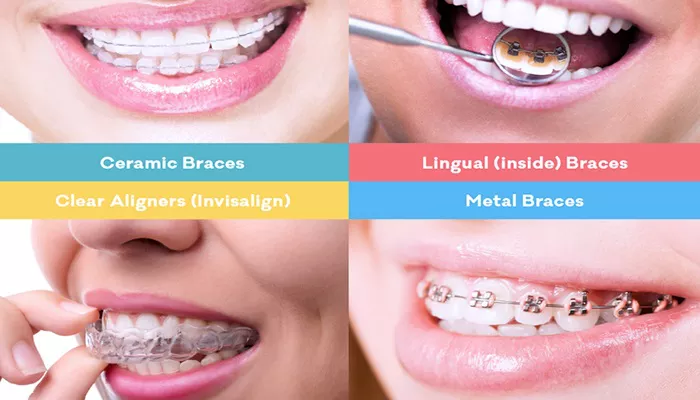Orthodontic treatment is a crucial aspect of dental health that can significantly impact a person’s life. It is essential for correcting misaligned teeth, addressing bite issues, and improving overall oral health. One of the most common questions parents have is about the right age to start orthodontic treatment for their children. This article will delve into the optimal age for initiating orthodontic treatment, the signs indicating the need for such treatment, and the benefits of starting at different ages.
Understanding Orthodontic Treatment
Orthodontic treatment involves the use of braces, aligners, and other dental devices to correct the alignment of teeth and jaws. This type of treatment can address various dental issues such as overcrowded teeth, gaps, overbites, underbites, and crossbites. Orthodontists, who are specialized dentists in this field, use these devices to gradually move teeth into their correct positions, thereby improving the patient’s bite and overall dental health.
Optimal Age for Orthodontic Evaluation
The American Association of Orthodontists (AAO) recommends that children have their first orthodontic evaluation by the age of seven. At this age, most children have a mix of primary (baby) teeth and permanent (adult) teeth. This mix allows the orthodontist to diagnose and evaluate any potential orthodontic issues early on. Early detection is crucial as it allows for timely intervention, which can prevent more severe problems in the future.
SEE ALSO: What Is The Most Affordable Type of Braces in 2024?
Why Age Seven?
At age seven, the first molars have typically erupted, establishing the back bite. During this period, an orthodontist can evaluate front-to-back and side-to-side tooth relationships. For example, the presence of erupting incisors can indicate possible overbite, open bite, crowding, or gummy smiles. Early intervention can guide the growth of the jaw and incoming permanent teeth, preventing more severe problems down the line.
Signs That Your Child May Need Orthodontic Treatment
Crowded or Misplaced Teeth: If your child’s teeth appear crowded or misplaced, it could be a sign that orthodontic treatment is needed. This is often noticeable when the permanent teeth start to come in.
Difficulty Chewing or Biting: Children who have difficulty chewing or biting their food may have misaligned teeth or jaws that need correction.
Breathing Through the Mouth: Chronic mouth breathing can be a sign of orthodontic issues, as it may indicate problems with jaw alignment.
Thumb Sucking: Prolonged thumb sucking after the age of five can cause misalignment of the teeth and jaw, potentially necessitating orthodontic treatment.
Speech Difficulties: Misaligned teeth can affect speech, making it difficult for children to pronounce certain sounds correctly.
Early Orthodontic Treatment
Early orthodontic treatment, also known as interceptive orthodontics, is initiated while some baby teeth are still present.
This phase can occur between the ages of six and ten. The goal of early treatment is to address certain issues before they become more severe. Early treatment can:
Guide the growth of the jaw to accommodate the incoming permanent teeth.
Reduce the risk of trauma to protruding front teeth.
Correct harmful oral habits.
Improve the appearance of a growing child’s smile.
Guide permanent teeth into a more favorable position.
Improve the way lips meet.
The Benefits of Early Orthodontic Treatment
Preventative Measures: Early treatment can prevent the development of more severe dental issues that could require extensive treatment later.
Reduced Treatment Time: By addressing issues early, the duration of orthodontic treatment in the teenage years can be shortened.
Improved Oral Health: Correcting alignment issues early can improve overall oral health, reducing the risk of tooth decay and gum disease.
Enhanced Self-Esteem: A healthy, well-aligned smile can boost a child’s confidence and self-esteem.
Adolescent Orthodontic Treatment
While early evaluation is recommended, the most common time for orthodontic treatment is during adolescence, typically between the ages of 11 and 14. By this age, most if not all of the permanent teeth have erupted, and the jaw has grown sufficiently to address alignment issues comprehensively. During adolescence, the body is still growing, which can make it easier to move teeth and correct jaw alignment.
Factors Influencing the Timing of Orthodontic Treatment
Several factors can influence the optimal timing for starting orthodontic treatment:
Severity of Dental Issues: The severity of the alignment or bite issues can dictate whether early intervention is necessary or if it can wait until adolescence.
Rate of Dental Development: Children develop at different rates, and the timing of permanent tooth eruption can vary.
Orthodontists will consider the individual development of each child when determining the right time to start treatment.
Overall Oral Health: The overall health of the child’s teeth and gums is a crucial factor. Good oral hygiene practices are essential for successful orthodontic treatment.
Adult Orthodontic Treatment
It’s important to note that orthodontic treatment is not limited to children and adolescents. Many adults also undergo orthodontic treatment to correct misaligned teeth and improve their smiles. Adult orthodontic treatment can be just as effective as treatment during childhood or adolescence, although it may take longer due to the maturity of the bones.
Modern Orthodontic Options for Adults
Modern orthodontics offers several discreet options for adults who may be concerned about the appearance of traditional braces. These options include:
Clear Aligners: Clear aligners, such as Invisalign, are nearly invisible and can be removed for eating and cleaning.
Lingual Braces: Lingual braces are attached to the back of the teeth, making them less visible.
Ceramic Braces: Ceramic braces are similar to traditional metal braces but use tooth-colored or clear brackets that blend in with the teeth.
Conclusion
Determining the right age to start orthodontic treatment depends on various factors, including the severity of the dental issues, the child’s rate of dental development, and overall oral health. An early orthodontic evaluation by age seven can help identify potential problems and allow for timely intervention. While early treatment can offer significant benefits, the most common time for orthodontic treatment is during adolescence. However, adults can also benefit from modern orthodontic options to achieve a healthy, beautiful smile.

